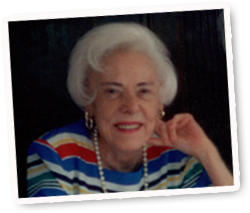
- Fellowship year:2015-2016
- University: University of Wisconsin- Madison
- Dissertation Topic/Category: East Asia
- Dissertation Title: Militarizing the Populace and Popularizing the Military: The Army in Interwar Japanese Society
My dissertation analyzes the army's place in interwar Japanese society. Rather than treating "army" and "society" as distinct and coherent entities, I analyze a diverse set of interest-driven, dynamic and bilateral relationships between particular elements of the army and specific civilian organizations. By combining analysis of concrete political, professional and interpersonal connections with a discursive institutionalism-based approach that focuses on the role of discourse in effecting institutional change, I demonstrate how such negotiated interactions resulted not only in a militarized public, but also in an army that was permeated with the concerns and ideas of the broader public. With the recent rumblings regarding a remilitarizing Japan, is more important than ever to demystify the history of the Japanese army and of Japanese militarism in a manner and that neither neglects the responsibility of the Japanese public nor portrays them as uniquely bellicose, and in this dissertation, I attempt to contribute to this effort. My study consists of two sections. The first looks at how army leaders reimagined themselves as "social engineers" as they sought to effect broader social change to foster the populace and soldiery necessary for total war. Japanese society, however, was not a facile mass for army ideologues to freely manipulate. I analyze the army's interactions with the Suiheisha, a rights group for the domestic minority, the hisabetsu burakumin, and the conservative, assimilationist Yiiwa movement. In challenging the army on the issue of discrimination in the ranks, elements of these groups pushed them to include ideas of inclusion and equality in their broader social project, even as they opposed the army on a more general level. Certain army figures, meanwhile, coopted such ideas to inspire broader national unity and to paint an inclusionary vision of empire abroad. My study of this process of mutual appropriation thus offers a more nuanced view of the "conversion" (tenko) phenomenon of the 1930s that is attentive to particular institutional prerogatives. Next, I examine officers from special units, who wore two hats, as military men and as technocratic professionals in their particular field. This section explores how these special units impacted and were impacted by their civilian professional peers, and militarized these communities while simultaneously incorporating many of their concerns and practices into the army project. First, I look at the complex relationship between the army's medical corps (Gun 'i dan) and the broader medical community, as represented by the Japanese Medical Association. While these groups shared synergistic research endeavors and personal and professional networks, the state's intervention into healthcare, which was increasingly spearheaded by the army, rankled many in the medical community. Finally, I trace interactions between the army's managerial department (Keiri bu) and the textile industry. Army ideologues castigated industrialists for putting their own interests ahead of those of the nation, but were in regular dialogue with them regarding matters of industrial productivity, management and labor organization. This dissertation complicates tropes of collaboration, coercion and indoctrination by demonstrating how civilian groups pursuing their perceived interests interacted with the army for reasons other than jingoism, and how the army, in seeking to mobilize the people, were impacted by them.
